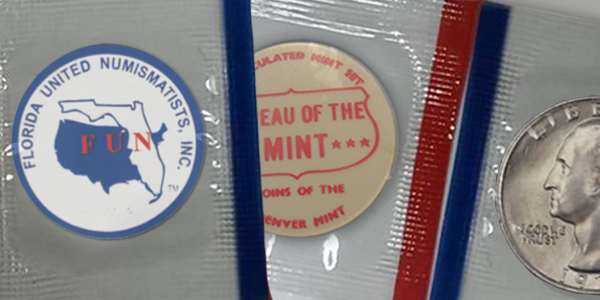
Does anyone collect mint sets these days? Those who do are among a shrinking group of hobbyists
By Joshua McMorrow-Hernandez for FUN Topics …..
The number of collectors who pursue mint sets as a significant numismatic objective today is relatively small – and getting smaller, according to United States Mint sales statistics and the observations of longtime dealers and hobby experts.
There is no concrete data measuring how many people actually collect mint sets – coin sets that generally contain one uncirculated specimen of each circulating coin from each producing mint. However, product distribution figures from the Mint are telling. The annual mintage of mint sets has steadily declined since the early days of the 50 States Quarters program, which began in 1999. In 1999, the Mint sold 1,243,867 mint sets, and the year 2000 saw even better sales for the annual set of uncirculated business-strike coinage: collectors bought a whopping 1,490,160 sets.
Since the early 2000s, there have been annual sales losses virtually every year since.
In fact, over the past four years, the U.S. Mint has seen uncirculated set sales figures drop substantially under 400,000 and head south toward the 300,000 mark. Just 392,224 mint sets were sold in 2012; 376,844 in 2013; 327,969 in 2014; and, so far, 310,207 for 2015. As of October 16, 2016, the United States Mint reported selling only 212,269 of the 2016 sets during the calendar year. That mathematically foretells further declines for this year and, quite possibly, could mean 2016 uncirculated sets may see a mintage of less than 300,000. For the record, mint set sales haven’t been so low since the early 1960s.
“Unfortunately, we find that there are very few collectors who actually collect mint sets,” says John Brush, Vice President of David Lawrence Rare Coins in Virginia Beach, Virginia. “Most of the time, mint sets are secondary to the rarer coins that collectors have put together and they tend to be the first thing that they look to sell when consolidating their collections.”
Mike Jacobs, president of Jake’s Marketplace in Lake Zurich, Illinois, reports mint set sales are at an all-time low for his business, too. “I expect we will see the collectors’ market for these sets implode,” he says. “Telemarketing promotions [are] putting a blip of demand on some sets.” Otherwise, he remarks, “the hobby is not taking on enough new collectors to change the supply and demand base for this Mint product.”
Slumping prices on some sets has even made it unprofitable for some coin dealers to sell mint sets.
“Today, I saw a 2007 mint set on eBay with an asking price of $15.99,” Jacobs observes. “The set has $13.82 of face value – and selling it [on eBay] comes with $2 in fees – $3.59 first-class postage and the buyer’s asking $3.99 total shipping fees… that’s volunteer work!”
Why Less Demand for Mint Sets Today?
Coin expert Scott Travers has some grim perspective on why demand for mint sets has dwindled in recent years. “There are fewer and fewer collectors,” says Travers, who has authored numerous books, including The Coin Collectors’ Survival Manual, Revised 7th Edition, and recently lectured at a special hobby forum hosted by the United States Mint in October to discuss the health of the numismatic environment now and in the future.
“Lower mint sets sales parallel the decline of collectors. The date sets are the embodiment of the people who are collectors,” Travers explains. “They’re the people who buy mint sets each year from the Mint and purchase extras for family and friends as gifts.”
Travers suggests the health of the mint set market is a barometer on the state of traditional numismatics because, he says, mint sets aren’t necessarily sought by investors but rather collectors who want to assemble date runs of coins.
“They’re collectibles,” he says. “They’re not very good investments. In fact, there’s almost no investment appreciation,” he asserts. “Of the modern mint sets, the only real winner is the 2012 uncirculated set.”
That set retails for around $60 – slightly more than twice its original issue price of $27.95.
For the most part, the values of mint sets have fallen sharply below their issue prices. Most of the copper-nickel clad sets from the 1970s and the bulk of those from the ’80s and the ’90s sell for nominal amounts over the face value of the coins within, and in many situations, those same sets can be sold back to coin dealers for only barely over face.
There are, of course, exceptions. All of the pre-1971 sets, which contain at least one silver coin, command worthwhile premiums. So, too, do those that include issues released only in uncirculated sets (which will be discussed in brief later in this article). Still, demand for mint sets today is seemingly much lower than in the early 1980s.
Not counting the 1976 three-piece 40 percent silver mint set, which was sold over the course of more than a decade from 1975 until 1986, the uncirculated set with the highest mintage is the 1981 mint set. The 1981 uncirculated set, of which 2,908,145 were sold, is a landmark piece. It was the last of the 1970s-era uncirculated sets, in the sense that it contains circulating copper-nickel clad dollar coins (Susan B. Anthony dollars), has no Certificate of Authenticity or coin specification card, and is packaged in a plain white outer envelope. It was also the last of the mint sets made before federal budget cuts brought the mint set program to a grinding halt.
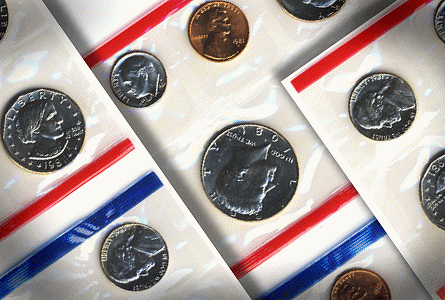 The 1981 mint set was supposed to be the last government-issued mint set, and no official mint sets were made in 1982 or 1983. Demand from coin collectors caused some government leaders to reconsider the elimination of the annual uncirculated coin sets, which returned in 1984.
The 1981 mint set was supposed to be the last government-issued mint set, and no official mint sets were made in 1982 or 1983. Demand from coin collectors caused some government leaders to reconsider the elimination of the annual uncirculated coin sets, which returned in 1984.
The 1984 mint sets didn’t look the same as their predecessors. They were packaged in colorful outer envelopes and included beautifully illustrated inner Certificates of Authenticity, which also offer informational specifications on each of the coins in the set.
There is a rhetorical question quietly threaded throughout this glancing recapitulation of the mint set saga of the early 1980s: would collectors today, like they did more than 30 years ago, miss uncirculated sets if officials at the United States Mint once again withdrew them from the annual product lineup? Given the anemic state of the uncirculated set market today, it’s rather difficult to say.
Original Mint Sets Not Always Easy To Find
Whether or not the Mint continues selling uncirculated sets, there will always be a secondary market for those that have been made. Whatever market that may be, in terms of its size or scope, is nonetheless dominated by coin collectors. Any investors involved in the mint set market are most likely buying uncirculated sets to seek out certain coins for third-party certification.
Investors, as well as coin dealers, often seek mint sets for the individual coins within. This has hit certain mint sets particularly hard, and especially earlier ones. Finding intact mint sets from the 1947 through 1958 era, the so-called double sets housed in cardboard panels that contain two examples of each issue, especially takes some time.
“So many of these early mint sets have been broken up for slabbing,” says Ed Howard, owner of Village Stamp and Coin in Tampa, Florida. “A lot of the coins in these sets have toning, and many people want brilliant surfaces. There aren’t many left in original condition.”
Relatively few of those early mint sets were made, and current prices reflect Howard’s observation.
Consider, for example, the 1947 mint set, which includes 28 coins, including two examples of each denomination from each of the mints that produced them that year, including the Philadelphia, Denver, and San Francisco Mints. The 1947 mint set is tied as the lowest-mintage U.S. mint set, with only 5,000 made (the same as the number of 1949 mint sets). The modern-day value of the 1947 mint set is approximately $2,750 – much more than its original $4.87.
A glance at the pricing data reveals all mint sets made from 1947 through 1953 still in their original government packaging are worth $1,000 or more. Mint sets made from 1954 through 1958, which are more common, are also valuable, selling for about $450 and up.
Indeed, for many investors, the pre-1959 mint sets represent prime hunting grounds for nice examples of Lincoln wheat cents, Jefferson nickels, Roosevelt dimes, Washington quarters, 1947 Walking Liberty half dollars, and Franklin half dollars. Folks who appreciate toned coins also enjoy cardboard-era mint sets because the sulfurs in the paper and chemicals in the glues frequently create some amazing toners – just another reason these early uncirculated sets are often broken apart by collectors who simply want individual examples of high-end, toned uncirculated coins. Many coins from early mint sets perform well in registry sets, which include third-party certified coins representing the best specimens of their issues.
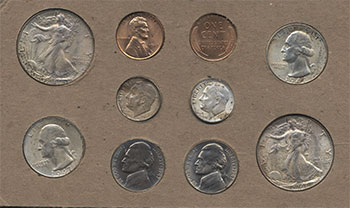 While some registry set builders and modern coin enthusiasts actively seek uncirculated sets, it is, again, traditional hobbyists who represent the typical mint set collector. These coin collectors often face an additional challenge in seeking not just the best possible coins in their mint sets, but also clean original packaging free from tears, bends, or other detractions. It could, in this sense, be argued that numismatists who place an emphasis on seeking mint sets with pristine government packaging are also essentially ephemerologists – those who collect ephemera such as envelopes, boxes, leaflets, information cards, and other types of common paper materials.
While some registry set builders and modern coin enthusiasts actively seek uncirculated sets, it is, again, traditional hobbyists who represent the typical mint set collector. These coin collectors often face an additional challenge in seeking not just the best possible coins in their mint sets, but also clean original packaging free from tears, bends, or other detractions. It could, in this sense, be argued that numismatists who place an emphasis on seeking mint sets with pristine government packaging are also essentially ephemerologists – those who collect ephemera such as envelopes, boxes, leaflets, information cards, and other types of common paper materials.
Studious mint set collectors can distinguish original uncirculated set envelopes versus aftermarket reprints. For example, the original manila envelopes packaged with the 1959, 1960, and 1961 mint sets have a number on the front bottom left. Aftermarket reprints for those years are usually stamped with phrases such as “1959 U.C.” (for 1959 Uncirculated Coins), “1960 U.C.” or “1961 U.C.”
Such erroneous markings are clear giveaways that the envelopes are not original. Secondary market envelopes and packaging for later years also look different than their original counterparts. Looking through enough original, government-packaged sets will help train the collector’s eye in distinguishing original mint set packaging from the “close but no cigar” aftermarket envelopes that are frequently seen on auction websites such as eBay.
Keys to Collecting Mint Sets
Fewer mint sets collectors means there are more opportunities for those who do enjoy uncirculated sets to find some great deals. There certainly are many wonderful bargains for uncirculated set collectors if they know where to look for them.
Coin dealers often have stashes of mint sets languishing in their vaults. For the most part, these dealers are perfectly happy to unload them, sometimes selling them just above bid, especially in the case of copper-nickel clad mint sets from the early 1970s through the mid-2000s.
When it comes to buying mint sets, especially early mint sets, the quality of the individual coins contained within can mean a huge difference in price. Categorically speaking, the term “early mint set” refers to the group of cardboard panel mint sets that contain two examples of each coin and were issued from 1947 through 1958. However, it is numismatically acceptable to also include the cellophane-packaged mint sets offered from 1959 through 1964 among the so-called early mint sets.
“We do like the earlier mint sets and find that the nicer ones are most often sent to grading as the coins command more when they are of the highest quality,” adds Brush of David Lawrence. The quality of these early mint sets must be carefully scrutinized, for some of the surviving mint sets don’t necessarily contain their original coins.
“Scarce are the 1947 through ’58 sets,” says Jacobs from Jake’s Marketplace. “Not the envelopes or the cardboard, but finding sets with coins that are the originals issued in the set, or have not been dipped or swapped out to make the collector happy they are getting something with eye appeal,” he cautions. “Sadly, dealers swapping out coins for third-party grading and replacing them with just other mint state examples has happened too much over the years.”
While the coins in the cardboard holders of the 1947-58 mint sets can be easily removed without any outward evidence, cellophane mint sets produced from 1959 through 1964 are essentially tamper-evident. As is the case with their earlier counterparts, countless mint sets made from 1959 through 1964 have been dissected by collectors and dealers who pursue the individual coins within the packaging. Again, the quality of the coins in the early cellophane sets is key in terms of prices for any given set.
The United States Mint temporarily halted the production of traditional mint sets from 1965 through 1967 in response to a nationwide coin shortage. Proof sets were also suspended during this time and the use of mintmarks on U.S. coins was abandoned for the same reasons during that three-year time period. From 1965 through 1967, the United States Mint filled the numismatic void with Special Mint Sets that contain one example of each denomination struck in a semi-brilliant to brilliant finish.
Mint sets, proof sets, and mint marks returned in 1968.
While many collectors prefer pre-1965 mint sets, which contain 90 percent silver dimes, quarters, and half dollars, there are plenty of reasons collectors can find enjoyment in later uncirculated sets, too. In many cases, buying uncirculated sets was at one time the only way to obtain certain issues.
For example, the United States Mint honored the 50th anniversary of the Roosevelt dime in 1996 by striking a special collector’s-only dime at the West Point Mint. The 1996-W Roosevelt dime was a surprise bonus for those who bought the 1996 uncirculated set. Today these 1996 mint sets are worth a premium (about $17) because of the inclusion of the relatively scarce 1996-W Roosevelt dime, of which only 1,457,000 were made.
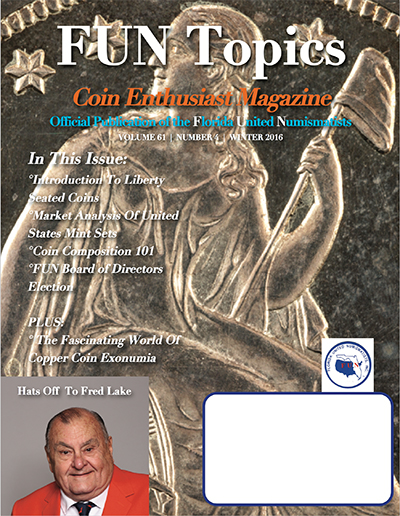
The 1970-D Kennedy half dollar was originally available only in that year’s uncirculated set. The same goes for the Philadelphia and Denver 1987 Kennedy half dollars – both released only for collectors. In fact, all half dollars made since 2002 have been made solely for numismatic purposes.
1973 mint sets were the only vehicle for obtaining the Philadelphia- and Denver-mint copper-nickel clad Eisenhower dollar coins from that year. The same situation played out eight years later when the 1981 Susan B. Anthony dollars were struck only for collectors. Since 2012, following the lackluster performance of the Sacagawea dollar and Presidential $1 coins in circulation, dollar coins have been made for only collectors, who can still obtain business-strike examples in uncirculated sets.
Some mint sets have included collector-only issues with special metallic compositions. For example, the three-coin 1776-1976 Bicentennial uncirculated set contains 40 percent silver examples of the circulating commemorative quarter, half dollar, and dollar coin that honored the 200th birthday of our nation.
Later, the Mint would release special copper versions of the 2009 Lincoln Bicentennial cents, which celebrate Abraham Lincoln’s 200th birthday with special reverse designs honoring the 16th president’s life.
These uncirculated copper cents, struck in the same metallic composition as the 1909 Lincoln cent, were available in a satin finish and sold only in uncirculated sets. It should be noted that proof examples of the 2009 copper cents were sold in proof sets.
Making the Case for the Mint Set
Mint sets certainly have a lot to offer, and many are quite accessible from the financial standpoint, too. Several mint sets made since 1971 can be bought for less than $5, and most dating from 1968 to the late 2000s can be had for less than $20. Among all mint sets made since 1959, only a handful presently cost more than $35.
Whether a collector’s taste is for classic 90 percent silver coins or modern coinage, U.S. mint sets are fantastic collectibles, and they are within the collecting budgets of most hobbyists. With prices so low and the options many, U.S. mint sets should be high on the wantlists of collectors who would like to enjoy a largely affordable, refreshingly straightforward area of the hobby.




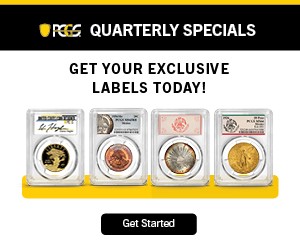
Limited additions are scooped up by dealers and resold making it hard to stay in the mix of collection of say silver eagles etc..
The price of coins coming out of the mints or getting unreal. Most of your collectors or collecting Silver Proof Sets, more so than anything else. The Silver Eagle price has gone up to an untouchable price from the mints, and are not the same mirror finish as those of years passed.